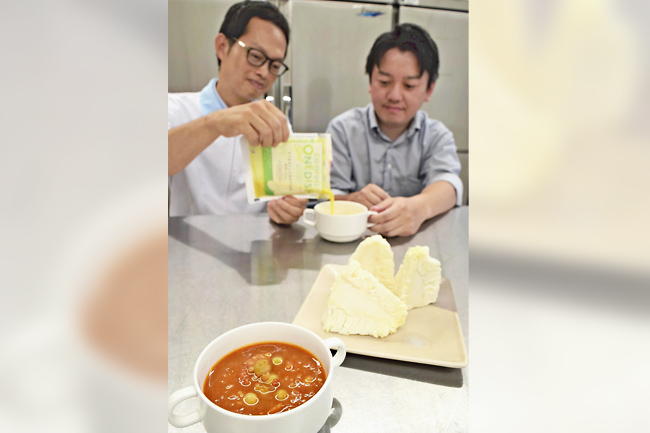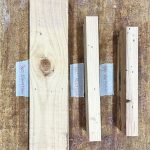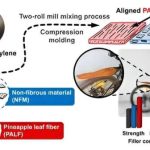ANN/THE JAPAN NEWS-YOMIURI – Efforts to upcycle food, or re-use food products that would otherwise go to waste, are gaining momentum in Japan amid growing environ mental awareness.
In June, Japan’s Kewpie Group used cabbage cores to develop such soups and stews, as part of its upcycling food initiative with the Co-Op Deli Consumers’ Co-operative Union based in Saitama.
The soups, made from ground cabbage cores, have an enjoyably coarse texture and unique sweetness. The products will be sold through a home delivery service for registered members, with about seven tonnes of cores expected to be used annually.
The vegetable’s core accounts for about 10 per cent of the total weight of a cabbage. It’s usually thrown away, as cores are fibrous and hard. However, they’re also sweet and rich in dietary fibre, making them suitable for stewed cuisine.
“Customers empathise with our consideration for the environment,” said Toshiyuki Uechi of the Vegetable Innovation Department of Kewpie Corp’s Institute of Food Creation.
Food delivery company Oisix ra daichi has been developing upcycled products since 2021. For example, the company sells rare rice crackers made from coffee dregs collected from the cafes run by Pronto Corp.


In its business collaboration with Choya Umeshu, Oisix ra daichi sold ume Japanese apricots used to make a beverage from ume. The company aims to increase its sales of upcycled food products to more than JPY2 billion by fiscal 2024.
Upcycling is called “creative re-use”, and some upcycled products are transformed into items other than food.
In 2018, Ito En and Mizuno jointly developed an artificial turf made by reusing tea leaves from the manufacturing process of Oi Ocha, an Ito En tea beverage. In 2021, the turf was used on the football field at Teikyo Nagaoka High School in Niigata Prefecture.
Used tea leaves from the equivalent of 430,000 bottles of Oi Ocha (525 millilitres) were mixed with resin to create chips. These proved more effective in suppressing surface temperatures on the field than did regular chips made of black rubber.
Since June this year, Meiji Co has been using ground cacao bean husks as a molding material for products such as small containers and vases – and they smell like chocolate.
“This system can benefit both our customers and people in the cacao industry,” said Meiji President Katsunari Matsuda.
Used tea leaves and coffee grounds are considered inedible and do not come under the category of “food loss” as defined by the Agriculture, Forestry and Fisheries Ministry.
However, there is a rising trend in the food industry to make effective use of items that would otherwise be thrown away, thanks to a growing awareness of mottainai, or “what a waste”, a term that encourages people to reduce, reuse and recycle.
According to market research firm Global Information, the global market for upcycled food products is expected to grow at an annual rate of more than 6.2 per cent from now to 2029. “This trend (of upcycling food) is also in line with consumers’ willingness in recent years to pay for value-added products,” said a senior researcher at the Distribution Economics Institute of Japan Tomohiro Ishikawa.


